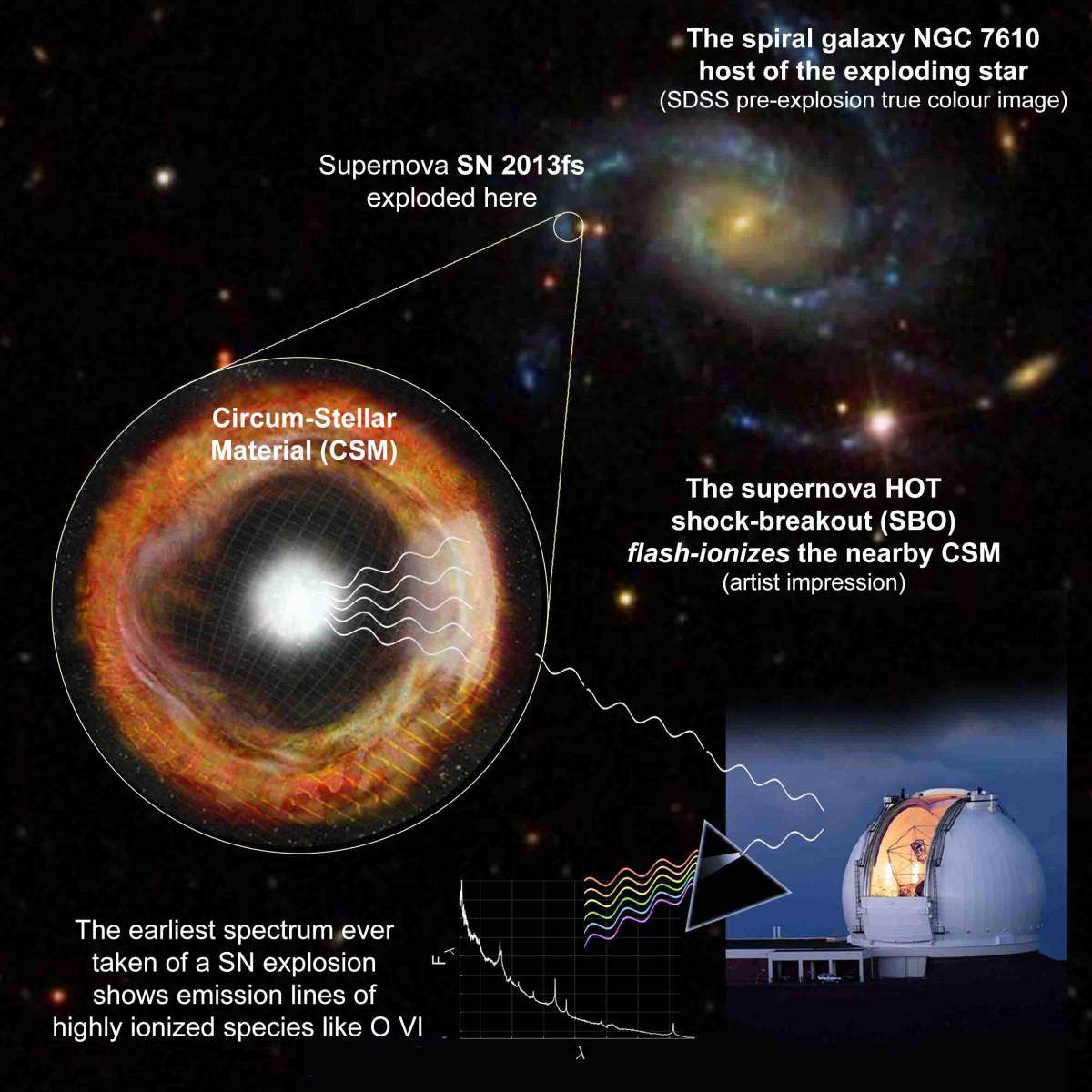
The yellow arrow marks the superluminous supernova DES15E2mlf in this false-color image of the surrounding field. North is up and east is left. This image was observed with the Dark Energy Camera (DECam) gri-band filters mounted on the Blanco 4-meter telescope on Dec. 28, 2015, around the time when the supernova reached its peak luminosity. Credit: Observers: D. Gerdes and S. Jouvel
At a distance of 10 billion light years, a supernova detected by the Dark Energy Survey team is one of the most distant ever discovered and confirmed. The death of a massive star in a distant galaxy 10 billion years ago created a rare superluminous supernova that astronomers say is one of the most distant ever discovered...
Read More





![Density contour plots including deflagration (white) and detonation (green) surfaces. Credit: arXiv:1609.07403 [astro-ph.HE] Read more at: https://phys.org/news/2017-03-ia-supernova-neutrino-possibility-explosion.html#jCp](https://3c1703fe8d.site.internapcdn.net/newman/gfx/news/hires/2017/58b965b9820aa.jpg)


Recent Comments